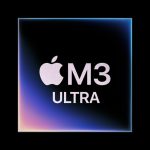
Following the integration of artificial intelligence (AI) into the Paris Olympics 2024, technological innovations are working hard to empower Paralympians and make this year’s Paralympic Games more accessible to everyone.
The Paralympics 2024 is slated to begin on August 28, serving as an opportunity for sports to transcend barriers. Throughout the years, advancements in technology have been leveraged to redefine the boundaries of human potential and extend the inclusivity of the Games to a wider community—including both athletes and the audience.
“For these Games, we wanted to carefully listen to the ecosystem of people with disabilities,” said Ludivine Munos, a member of the Paris 2024 Olympic and Paralympic Games Organizing Committee.
Tech assistants for Paralympians
Navigation is one of the challenges blind athletes have to face during the Games. To address that, a new app has been developed in partnership with Intel, which uses technology to map indoor locations and provide audio cues with step-by-step directions to guide players around the venues.
Five-time Paralympic long jumper Lex Gilette has tested the app at the US training camp ahead of the competition.
“This year’s deployment has been focused on the athletes primarily, and specifically at the performance centers and the training grounds. And in the coming games, we’re hoping to expand that to visitors and staff, and people attending the games as well,” explained Evelyn Tichenor, a partnership manager from Intel, in a BBC video.
Moreover, sprinting and running marathons along the track have become easier for Para athletes, thanks to high-tech prosthetics and orthotics.
Taking the lead in this endeavor is Iceland-based company Össur, whose carbon-fiber prosthetic allows spring-like propulsion. When customized, it can also fit a player’s unique biomechanics to ensure comfort and better control.
Similarly, groundbreaking wheelchair designs specific for sprinting, basketball, and rugby, among other sports, have maximized athlete performance in the Games. Wearable tech has also revolutionized wheelchair racing with its use of biometric threads to collect and analyze data.
American Paralympian Brian Seaman, who is about to compete in his third Paralympics, has been using a high-tech elbow sleeve made by Brooklyn-based startup Nextiles.
“It’s the only sleeve in the world that has the technology that wheelchair racers can currently use to actually collect real-time cadence data,” Seaman told BBC.
Cadence refers to the number of strokes a Wheelchair sprinter puts in when racing. The movement of biometric threads stitched in the sleeves is measured and shared with a smartphone app to determine any unnecessary strokes, which could be used to adjust training sessions.
More inclusivity, more audience engagement
The opening and closing ceremonies of the Tokyo Olympics in 2021 saw the use of audio descriptions for spectators with visual impairments. Now, this technology has also been witnessed in 15 sports at the Paris Olympics.
“The aim is to describe everything happening in the stadium in the smallest details—movement, atmosphere, colors, action,’’ stated Adrien Izard-Le Calvé, who joins Joana Wexsteen as the French audio descriptors.
“Being able to assist people with visual impairments is incredible. What we are experiencing is exceptional, and helping these individuals feel as included as anyone else is crucial,” Wexsteen said.
The audio description broadcast of the Games was available on the Paris 2024 Olympics app.
Likewise, the Olympic committee debuted the Vision Pad in this year’s installment of the quadrennial sports competition. This tactile tablet features a moving magnetic ball, which users have utilized as a guide to keep track of the movement of the ball in play.
Forty-five tablets have been rolled out in the Games, but they only worked for basketball, soccer, and rugby at the Olympics. Four Para sports will witness the technology later. So far, the Vision Pad does not cover individual sports and non-ball games.
Additionally, the Low-Vision Helmet is available for visually impaired audiences. Similar to a virtual reality (VR) headset, this gear allows the users to zoom in on a player and see live action as well as watch televised coverages.
While the helmet has a low resolution, French user Florian Trichaud felt included after being able to visually experience a track and field final at the Stade de France.




















